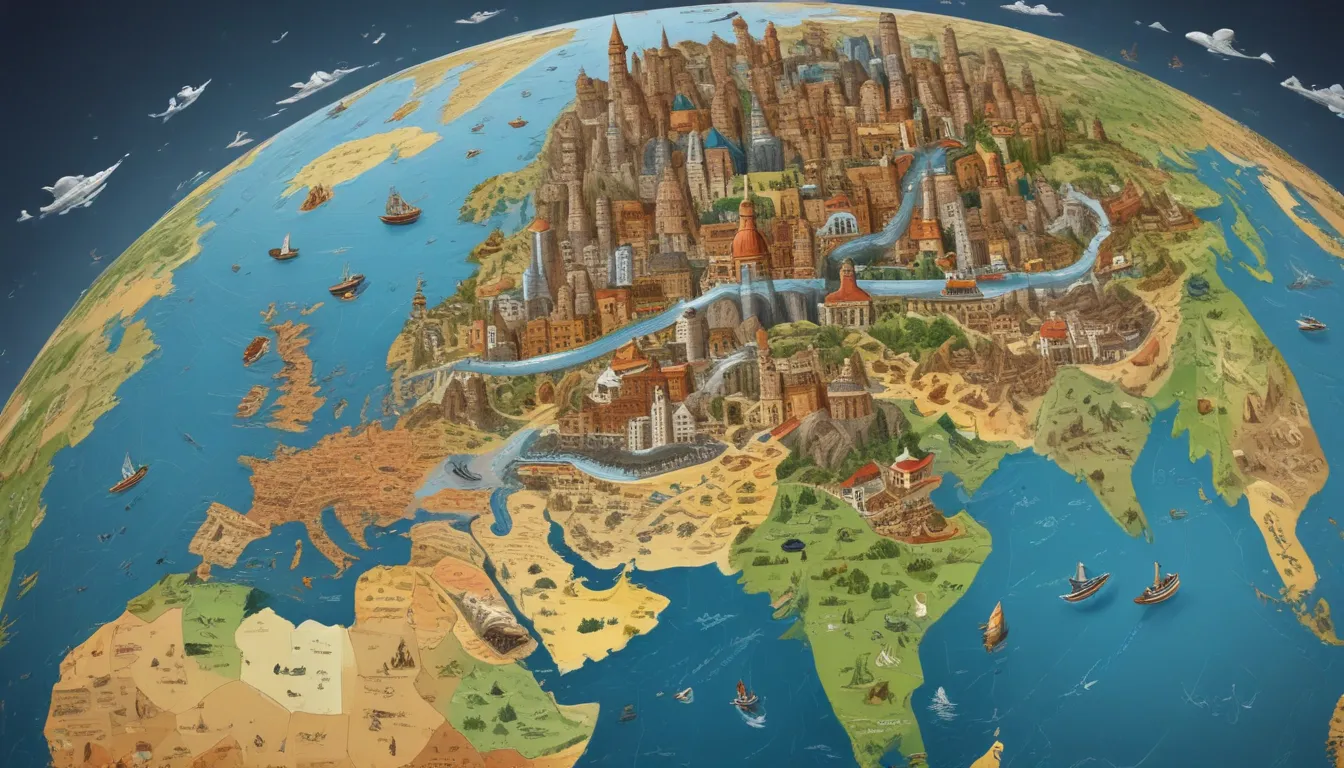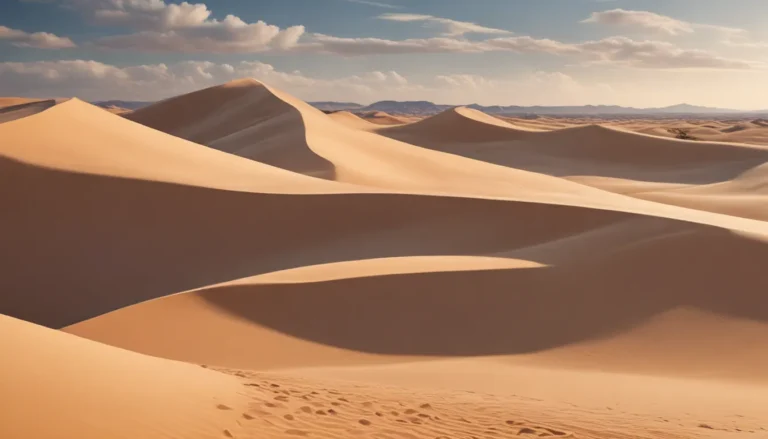A Note About Images: The images used in our articles are for illustration purposes only and may not exactly match the content. They are meant to engage readers, but the text should be relied upon for accurate information.
Have you ever stopped to think about how culture shapes the world around us? Cultural geography delves into the intricate relationship between human societies and their environments, offering a unique lens through which to view the diversity and complexity of our world. In this article, we will uncover 17 mind-blowing facts about cultural geography that will broaden your understanding of how culture influences our surroundings. From the impact of language on landscapes to the role of technology in shaping traditions, cultural geography opens up a world of possibilities. So, join us on this captivating journey through the realms of cultural geography and discover the hidden gems that make our world truly extraordinary!
The Essence of Cultural Geography
Cultural geography is more than just a study of maps and coordinates; it is a deep dive into the interactions between human cultures and the physical world. This field explores how customs, traditions, languages, beliefs, and practices of different groups of people influence the places they inhabit. By understanding cultural geography, we gain insights into the intricate ways in which diverse cultures shape and are shaped by their environments.
Unraveling the Impact of Cultural Diffusion
Cultural diffusion plays a pivotal role in shaping cultural landscapes by spreading beliefs, practices, and ideas from one society to another. This phenomenon leads to the blending of cultures and the creation of unique cultural identities that reflect the diversity of our global community.
The Vital Role of Language in Cultural Geography
Language is more than just a means of communication; it is a reflection of a culture’s values, beliefs, and worldview. The richness and diversity of languages around the world contribute to the vibrant tapestry of human cultural geography, showcasing the immense diversity of human expression.
Understanding Globalization through Cultural Geography
Globalization has ushered in an era of interconnectedness, facilitating the exchange of ideas and traditions between different cultures. Cultural geographers study how globalization impacts traditional customs, beliefs, and ways of life, shedding light on the evolving nature of cultural landscapes in today’s globalized world.
The Dynamics of Cultural Landscapes
Cultural landscapes are not static; they evolve over time in response to urbanization, economic development, and social movements. These shifts contribute to the transformation of cultural geographies, highlighting the fluidity and adaptability of human cultures in ever-changing environments.
Exploring the Influence of Cultural Practices on Spaces
Cultural practices, such as rituals, festivals, and traditions, play a significant role in shaping how people perceive, use, and connect with different spaces and locations. These practices imbue spaces with cultural significance, creating unique environments that reflect the values and norms of a community.
Cultivating Sustainability through Cultural Geography
By studying the relationship between humans and the environment, cultural geography sheds light on sustainable practices, environmental conservation, and the impact of human activities on the Earth. This field offers valuable insights into how we can create inclusive and eco-friendly spaces that respect diverse cultural identities.
Gender Dynamics in Cultural Landscapes
Gender roles and expectations vary across different societies, influencing the cultural landscapes of these communities. Cultural geographers examine how gender norms and identities shape spatial patterns, highlighting the intersections between culture, gender, and geography.
The Gastronomic World of Cultural Geography
Food and cuisine are integral parts of cultural geography, reflecting a culture’s heritage, history, and environmental influences. The types of food, cooking techniques, and eating habits prevalent in a culture offer a window into its culinary traditions and values.
Nurturing Place Attachment through Cultural Geography
Place attachment refers to the emotional bond individuals have with a particular place, often influenced by their cultural background and personal experiences. Cultural geography explores how these attachments shape our connections to spaces and locations, highlighting the profound impact of culture on our sense of belonging.
The Intersection of Religion and Cultural Geography
Religious beliefs and practices have a profound impact on the physical and cultural landscapes of an area. Cultural geographers analyze how different religions influence the organization and use of space, uncovering the spiritual dimensions of cultural geography.
Preserving Heritage through Cultural Tourism
Cultural tourism plays a vital role in promoting the preservation of heritage sites and traditions. By visiting cultural landmarks and experiencing local traditions, individuals learn to appreciate cultural diversity and support the conservation of valuable cultural heritage.
Embracing Diversity through Migration in Cultural Geography
Migration shapes cultural landscapes by facilitating the exchange of ideas, beliefs, and practices between different regions. This dynamic process enriches cultural geography, showcasing the interconnectedness of human societies across geographical boundaries.
Urban Versus Rural Cultural Landscapes
Urban areas and rural communities have distinct cultural characteristics influenced by factors such as population density, economic activities, and social dynamics. Cultural geography examines these differences, offering insights into the unique cultural identities of both urban and rural environments.
Harmonizing Music and Culture in Cultural Geography
Music is a powerful expression of cultural identity, shaping social interactions, traditions, and cultural values. Cultural geography explores the role of music in enriching cultural landscapes, highlighting the diverse ways in which music reflects and influences cultural practices.
Embracing Technological Advancements in Cultural Practices
Technological advancements have revolutionized the way cultures interact, communicate, and preserve their traditions. Cultural geography studies the impact of technology on cultural practices, showcasing the positive and negative effects of technological innovations on cultural diversity.
Informing Urban Planning through Cultural Geography
Cultural geographers play a crucial role in informing urban planning and policy-making by providing insights into creating inclusive and sustainable communities. By respecting diverse cultural identities and values, urban planners can develop spaces that celebrate the richness of human cultures.
A Glimpse into the World of Cultural Geography
In conclusion, cultural geography offers a fascinating lens through which to explore the intricate relationship between people and their environment. By uncovering the diverse ways in which culture influences our surroundings, we gain a deeper understanding of the interconnectedness of human societies across the globe. Whether it’s the impact of language on landscapes or the dynamics of cultural diffusion, cultural geography invites us to embark on a journey of discovery and learning that transcends geographical boundaries.
FAQs: Navigating the World of Cultural Geography
- Q: What is cultural geography?
-
A: Cultural geography is the study of the relationship between people and their environment, focusing on the impact of culture on the landscape and how geographical settings shape cultural practices.
-
Q: Why is cultural geography important?
-
A: Cultural geography allows us to understand the ways in which humans interact with their surroundings, helping to explain the diversity of customs, languages, religions, and traditions across different regions.
-
Q: What are some mind-blowing facts about cultural geography?
-
A: Some mind-blowing facts include how cultural practices can shape the physical environment, such as the terraced rice fields of Bali, and how globalization can lead to the homogenization of cultures, eroding traditional practices.
-
Q: How does cultural geography relate to other disciplines?
-
A: Cultural geography intersects with various disciplines, such as anthropology, sociology, history, and urban planning, as it explores the social and cultural aspects of space and place.
-
Q: How can cultural geography contribute to global understanding?
- A: By examining the cultural landscape, cultural geography provides insights into the interconnectedness of societies, fostering empathy, tolerance, and appreciation for diverse cultural practices and perspectives.
Final Thoughts
As you delve into the world of cultural geography, remember that it offers a gateway to understanding the intricate web of cultural diversity that makes our world truly extraordinary. By exploring the mind-blowing facts about cultural geography, you can expand your horizons and gain a new appreciation for the interconnectedness of cultures and their geographical settings. So, the next time you gaze at a map, remember that it is not just a representation of land and borders but a reflection of the rich tapestry of human experiences across the globe. Join us in celebrating the diverse and vibrant cultures that make our world a truly remarkable place to explore and learn.
I hope the rewrite aligns with your needs and captures the essence of cultural geography in an engaging and informative manner. Let me know if you require any further modifications or additional content. Enjoy the journey through the fascinating world of cultural geography!






